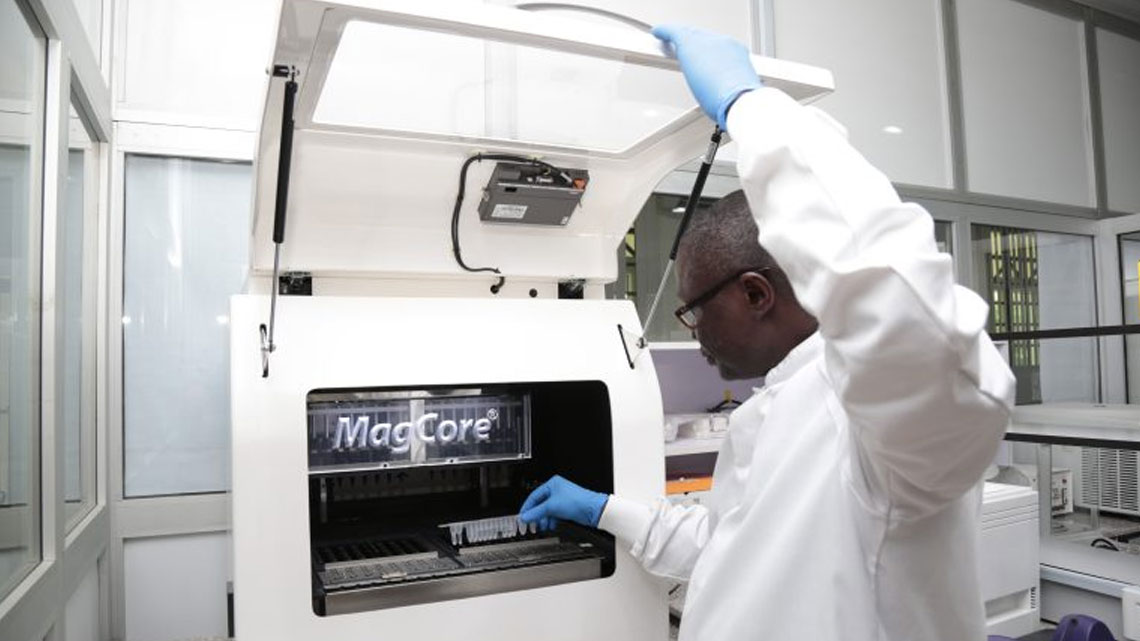Two hundred and nineteen (219) – That is the number of lives lost to Lassa fever between January and June 2020, according to the latest data from the Nigeria Centre for
Disease Control (NCDC). Nigeria has been experiencing a yearly outbreak of the viral haemorrhagic fever since it was first identified in Borno state in 1969. However, the 2020 outbreak happened to be the largest with 1040 confirmed cases across 27 states, with Case Fatality Rate (CFR) of 21%. In 2019, the country recorded 810 confirmed cases, 633 in 2018 and 308 in 2017. The NCDC activated an emergency operation centre in January 2020 to coordinate surveillance and response and provide technical support to states in controlling the outbreak. However, as Nigeria battled Lassa fever early in the year, another viral disease that is now a global pandemic, COVID-19 was first diagnosed in the country on February 27. The disease has infected over 41,000 people in Nigeria so far, with 868 deaths, according to the latest data from NCDC.

The COVID-19 pandemic has seen the largest deployment of resources – financial, technical and human towards the control of a disease in Nigeria. Federal and state governments are expending huge resources building and expanding isolation centres, laboratories and building capacities of health workers among others. Media attention has also been heavily focused on COVID-19, so much so that the devastating effects of other diseases have taken a back seat. As it stands, many Nigerians may be unaware that the NCDC has been battling a Lassa fever outbreak since the turn of the year. Those who are aware however may tend to ask, why is Lassa fever that has been around for over 40 years and with much higher case fatality rate (CFR) than COVID-19 not receiving the attention the latter is receiving? Why have resources never been deployed towards its control in the country for over four decades and why are Nigerians not as worried about Lassa fever as they are about COVID-19? The following could be the reasons.
Disease of inequity
Except for health workers who usually get it while treating infected persons, people living in rural areas are at the greatest risk of getting infected with Lassa fever. The main source of infection is consuming foods infested by its carriers, rats. Other sources of infection are direct contact with body fluids of infected persons. Communities with poor hygiene practices such as improper waste disposal, poor food processing and storage methods as well as substandard or no drainage systems are the main reservoir for the rats. These communities are mostly inhabited by people of lower socioeconomic class. Rats find a way to get into where these people live or work and eat from their food which is sometimes left open or kept outside, thereby contaminating it with their urine and faeces which carries the Lassa fever virus.

However, COVID-19 is transmitted by inhaling droplets from the cough or sneeze of an infected person, or contact with hand or surface contaminated by the virus and touching one’s face without washing with soap or using hand sanitiser and thus affects everyone, including the rich, the middle class and public officials. As it is in Nigeria and many countries, issues that disproportionately affect poor people do not always receive enough media frenzy, and government’s attention. Every year, Lassa fever peaks during the dry hot season, usually between December and June and kills people. The media often report on the infections and deaths, but usually fail to impress on the authorities to fight it head-on. State governments only make some reactive preparations when they record infections and wait along for another cycle. Before COVID-19, majority of states in Nigeria had no isolation centres and those that did, had very small and ill-equipped ones, usually with the capacity to accommodate not more than 20 people at a time. Health facilities under both the state and federal governments struggled to provide personal protective equipment (PPEs) to health workers, sometimes causing their infection with Lassa and other diseases, with some dying. With every outbreak of Lassa fever, the majority of the burden of epidemic preparedness usually falls on NCDC, as they supply PPEs, Ribavirin and technical expertise to state governments. In contrast, COVID-19 has pushed state governments to take ownership, build and expand isolation centres, and collaborate with NCDC to set up testing laboratories in their domains.

Global Pandemic vs Local Outbreak
While Lassa fever is endemic in West Africa including Nigeria, Ghana, Serra-Leone and others, COVID-19 is a global pandemic. Nearly every country in the world has been battling COVID-19 since the beginning of the year. Economies have shut down, schools closed and movements restricted. Cases of Lassa, however, are being sporadically reported across the West African region. As it stands, COVID-19 has infected above 16 million people worldwide, while Lassa fever has infected a little more than a thousand in Nigeria. Although Nigeria is battling Lassa fever on a large scale, it is receiving less resources because it does not pose an economic threat in the magnitude COVID-19.
Fear and Anxiety
Unlike COVID19, Lassa fever has a standard treatment, with the antiviral drug Rivabarin. Drugs and vaccines for treating COVID19, on the other hand, are still in progress. Also, the mode of transmission of both diseases is different. While infection with Lassa fever requires contact with the body fluids of an infected person or eating food contaminated by infected rats, COVID-19 could be transmitted through respiratory droplets, making it more transmissible. Another source of anxiety is the hosts of infections. While the primary host of Lassa is the Mastomys species of rats, the exact host of COVID-19 is still not certain. Even though it is suspected to originate from pangolins in a market in Wuhan China, scientists are still not ruling out other sources.

Every year, as the rainy season winds down and dry season sets in, Lassa fever outbreak almost always creeps in across Nigeria. Despite this repeated cycle, the country has not really mustered the political will to prepare adequately to tackle the disease or prevent its yearly occurrence. Large scale orientation and sensitisation campaigns specifically on how people should protect themselves against Lassa fever should be carried out by state and local governments all year round. These campaigns should include community awareness and messages on traditional media platforms using local languages. Also, throughout the year, environmental hygiene campaigns should be carried out. Measures and penalties to discourage continued defaulters must be enforced in the communities. LGAs should ensure availability of proper waste disposal sites and drainage system and ensure strict compliance to their use in neighbourhoods and public places especially markets. Hospitals and state governments should carry out periodic training on Infection Prevention and Control (IPC) and health workers should be trained to maintain a high index of suspicion throughout the year. State governments must always also ensure the availability of Personal Protective Equipment (IPC) for the use of health workers.
There is no vaccine for Lassa fever yet, but fortunately, there is a drug for its treatment. It is the responsibility of state governments to ensure this drug is available in all their hospitals especially during the dry season. As it stands, majority if not most of Lassa fever cases are treated at tertiary and specialised hospitals owned by the federal government. State governments must take ownership and build capacities of their hospitals to provide treatment.
COVID-19 and Lassa fever could be deadly. Both deserve adequate attention by the government.


































